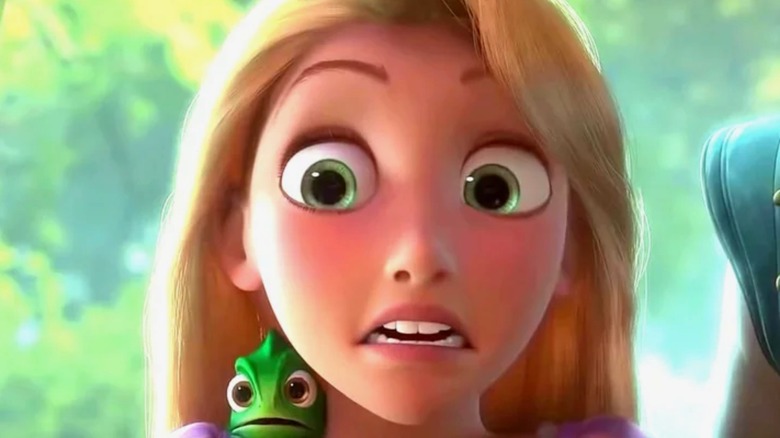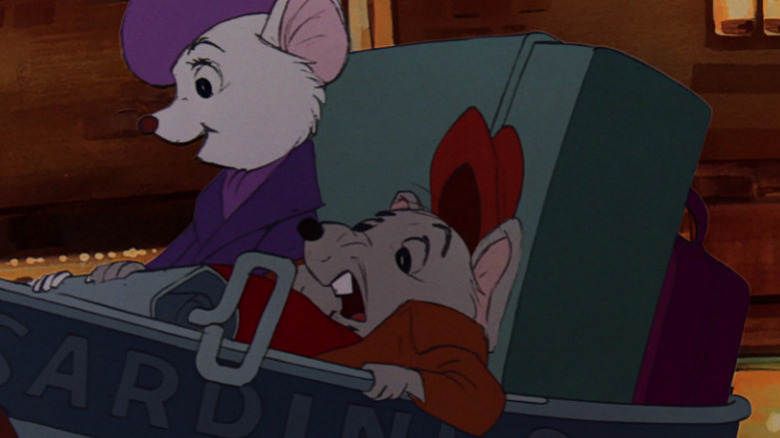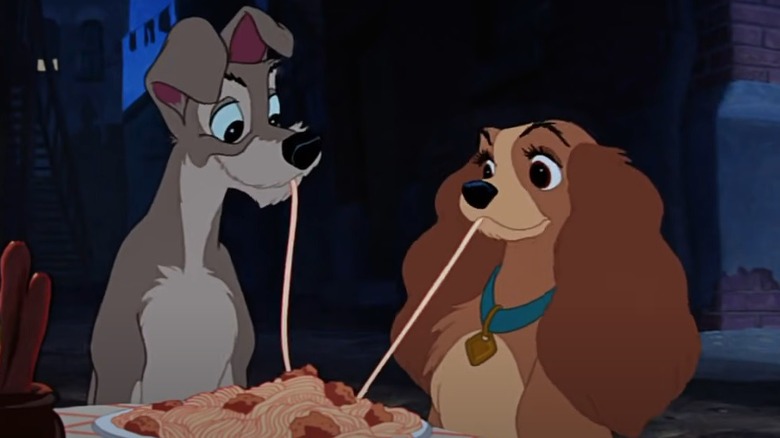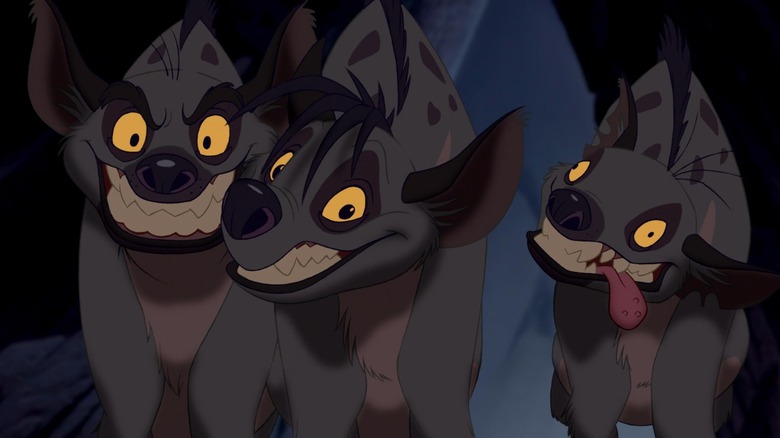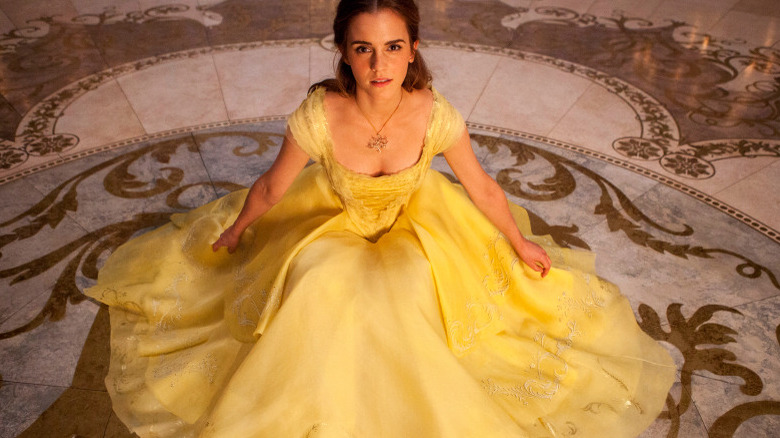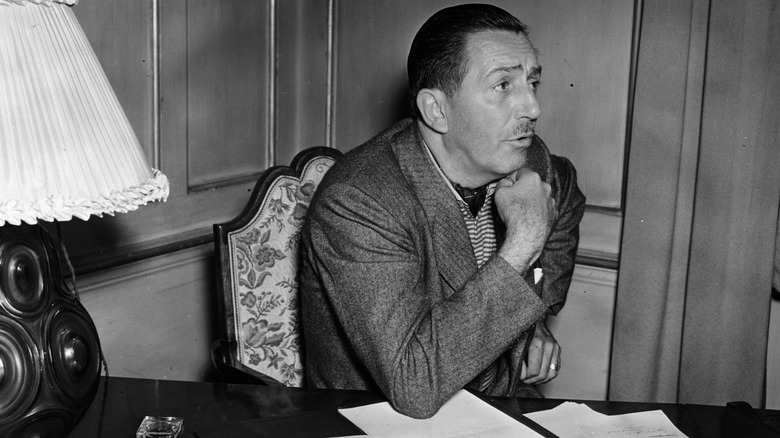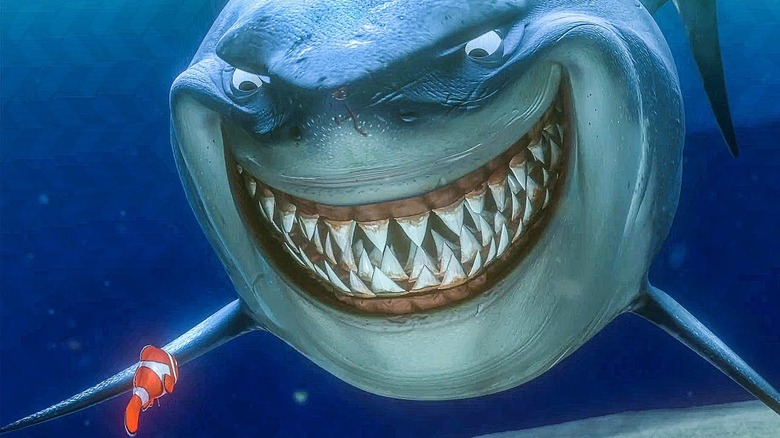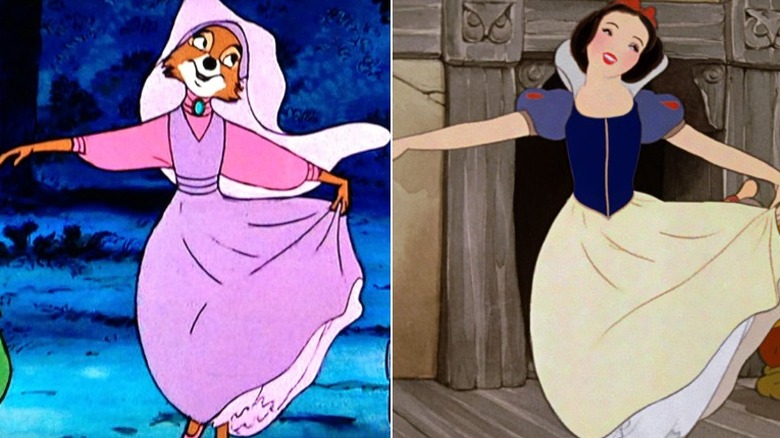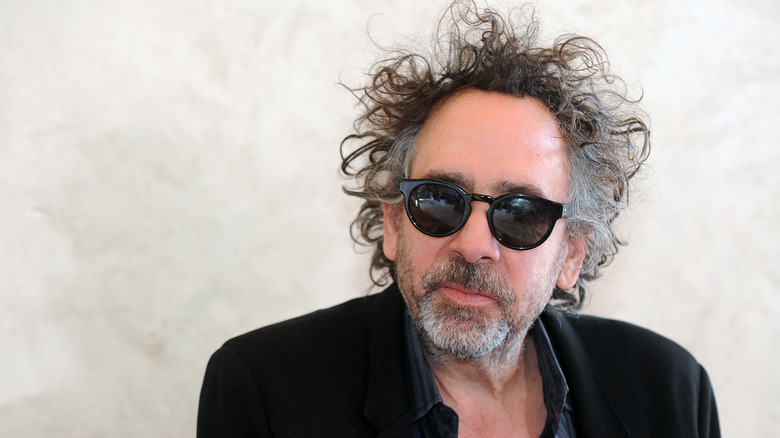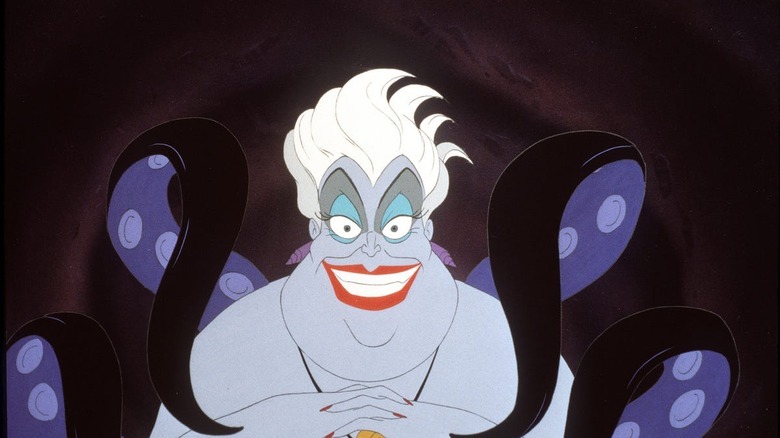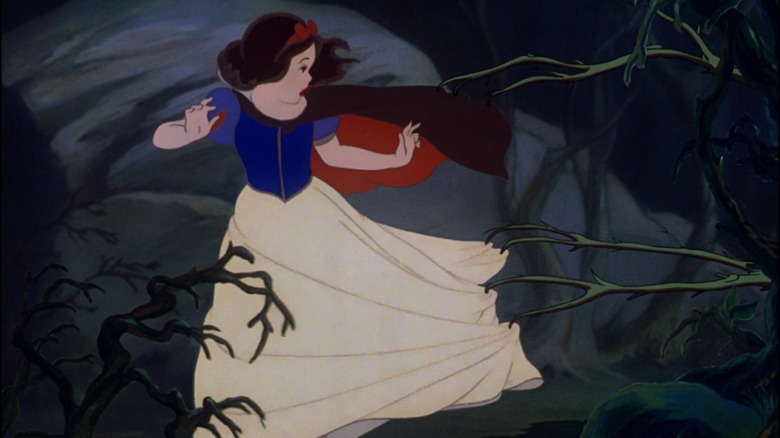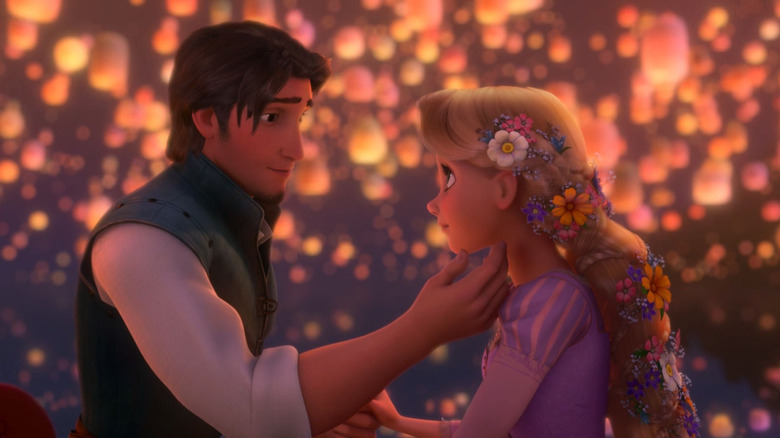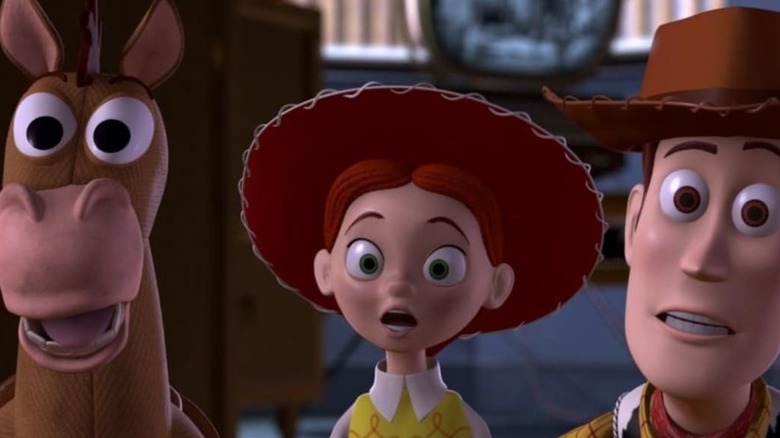Disney Movie Facts That Sound Fake But Are Actually Real
Disney has been delighting audiences young and old for more than 90 years. From their humble beginnings making short films, to the many beloved animated features, live action blockbusters, and now multiple franchises which fall under their expansive umbrella, Disney has always prided itself on providing fun for all the family.
Many of us may have grown up watching these films, and the brand has formed a key component of our lives for generations. However, as much as you might think you know Disney, there's plenty of things that the House of Mouse have kept in their vaults in order to preserve the wholesome image they're known for. Whether you're a casual viewer or a dedicated aficionado, there are plenty of unbelievable stories, wild theories and behind-the-scenes insights that sound completely made-up — but are actually true — that it'll make you question everything you thought you knew about Disney.
Buckle up as things get "curiouser and curiouser" on this exploration of the strange, the deranged, and the outright odd Disney movie facts that sound so far-fetched you'll believe they're fake.
The Rescuers contained images of a topless woman
In what has become one of the most fascinating aspects of Disney films, many eagle-eyed viewers have attempted to spot hidden messages concealed in the movies they know and love. Sometimes they're urban legends, but others are very real.
Perhaps one of the most notorious examples is the fact that for more than 20 years, there was a very NSFW image lurking in "The Rescuers." In what is otherwise a very wholesome story of two mice heading off on an adventure to rescue an abducted orphan, a mischievous employee decided to insert the photographic image of a topless woman.
The two frames in question couldn't be spotted at normal speed, and thus wasn't noticeable in the film's 1977 theatrical release. When it came to a 1999 home video release, however, viewers were able to slow it down and catch the image during the scene in which Miss Bianca and Bernard are taking flight, about to embark on their adventure.
This led to Disney requesting a recall of over 3.4 million copies of the offending tapes. This wouldn't be the first time Disney landed in hot water over apparent inappropriate messages or images in their films, but while similarly scandalous accusations against "The Lion King" were eventually chalked up to a misunderstanding, the fact that Disney recalled "The Rescuers" proved that the find was very much real.
The most iconic Lady and the Tramp scene was almost cut
When you think of the 1955 Disney classic "Lady and the Tramp," the first image that would usually spring to mind would be the iconic scene of the two love-struck dogs sharing a romantic bowl of spaghetti together. This moment has become so memorable that it's been parodied and recreated countless times, and is frequently cited as one of the most romantic scenes in cinema.
However, this scene almost didn't make the cut, and it was Walt Disney himself that was skeptical about it. While keen for the animals to display human emotions, he did wonder whether showing them enjoying a meal together was a step too far. In real life, two dogs sharing a plate of food would probably be a bit of a messy experience, and the concern was that this scene would lack the finesse and grace to give it that romantic feel.
Directing animator Frank Thomas was able to save the day, however, working on a rough version of the scene to convince Walt that it could be included in the film with just a sprinkle of Disney magic. Fortunately, Walt was convinced and the scene made it into the film, and was of course recreated once again in the 2019 live action version of the film.
Hyena experts called for a boycott of The Lion King
In a film that features talking animals and song and dance numbers, the suspension of disbelief is essential. When it came to "The Lion King," however, it was the portrayal of the villainous sidekicks that landed Disney in some trouble with a hyena expert.
Shenzi, Banzai, and Ed the hyenas are the loyal henchmen of the villainous Scar, known for their haunting cackle, general ineptitude, and being very much at the bottom of the pecking order when it comes to hunting. Some biologists were so incensed by the way the hyenas were portrayed as villains that they published articles seeking to clear the good name of hyenas everywhere. A piece by Laurence Frank of the University of California, Berkeley, even went as far as calling for a boycott of "The Lion King."
While a boycott might seem quite extreme, the experts may well have been onto something, and subsequent research has debunked many of the myths about these creatures. Perhaps the sequel to the 2019 live action "The Lion King" will give us a more well-rounded depiction of these misunderstood animals.
Emma Watson turned down the role of Cinderella before accepting the part of Belle
While she may seem like she was born to play the part of Belle, Emma Watson's Disney journey almost ended very differently when she was offered — and turned down — the role of Cinderella.
In recent years, Emma Watson has become as well-known for her advocacy work as U.N. ambassador for women as she is for her role as Hermione Granger in the "Harry Potter" films. The depiction of the characters she's playing on screen is something that she considers before accepting a role. With the concern that Cinderella wouldn't provide a strong enough feminist role model for young girls, Watson rejected the part, which subsequently went to Lily James.
The role of Belle piqued her interest, however, as it felt much more closely aligned to her feminist ideals. She even had influence over the writing of the character in the 2017 live-action version of "Beauty and the Beast," requesting more of a backstory that added further depth to the character.
It was perhaps a smart decision on the part of Watson, as Disney's 2015 live-action retelling of "Cinderella" garnered some controversy, particularly regarding the strict diet that was required of Lily James in order to fit into the costumes.
A phrase from Bambi was used to signal Walt's arrival
In the Golden Age of Disney, Walt held a lot of power and influence over the creative output of his studio, and with "Bambi" in particular, he was adamant that every aspect of this film would be perfect. He went to extraordinary lengths to ensure accuracy when making the film, including shipping real deer to the Burbank studio and hiring an animal anatomist to ensure his artists' drawings were as close to the real thing as possible.
While these painstaking lengths paid off in the end, it undoubtedly created quite a stressful environment for the animators and staff working on the film. As they worked, preparing for the nitpicking that would come with Walt's daily visits to the studio, they adopted a phrase among themselves to signal his arrival to each other. "Man is in the forest" is the movie's most ominous line, spoken when the faceless man — the villain of the film — arrives in the idyllic forest to hunt. According to a profile from The New England Historical Society, when Walt was spotted coming down the corridor, the artists would use this very line to warn their peers that the boss was on his way.
Bruce from Finding Nemo was named after the shark in Jaws
Almost every single shark movie made since 1975 owes a certain debt to Steven Spielberg's "Jaws," and when Disney-Pixar brought us a vegetarian shark in "Finding Nemo," it seemed only natural to pay homage.
Without fancy CGI techniques to bring their shark to life, the makers of "Jaws" instead had to rely on a frequently unreliable mechanical shark to terrorize the residents of Amity Island. Choosing to film on location in Martha's Vineyard instead of in a studio, the mechanical shark didn't fare well out on the open ocean, and during filming became affectionately known by the crew as Bruce, reportedly named after Spielberg's lawyer.
Not only does Bruce, the reformed shark of "Finding Nemo," share its name with the infamous "Jaws" shark, but there's even a fan theory which suggests how the two could be related. That one is very much open to speculation, but the influence of "Jaws" is certainly clear.
Robin Hood uses tons of recycled Disney animation
Over the decades, Disney has dealt with some pretty tumultuous events and box-office flops and somehow continued to thrive. Notable examples include World War II, when the studio lost much of its workforce and its revenue to the war effort, and so produced a series of "package films" (short films packaged together to form a feature) in order to keep the studio afloat.
Similarly, in the era following Walt's death in 1966, the studio was left without clear direction and purpose, and the small budgets had to work a lot harder in order to keep producing films. Animation in particular is costly in both money and time, so occasionally some cost-cutting methods were used to keep things ticking over.
One of the methods employed was the use of rotoscoping (an animation technique that animators use to trace over existing footage), something that was particularly evident in 1973's "Robin Hood." This animated tale of the legendary outlaw re-used animation from the Disney archives, including scenes from "Snow White," "The Aristocats," and "The Jungle Book." The Disney artists have never denied using this technique, and while it's especially apparent in "Robin Hood," they also later used it in "Beauty and the Beast," which borrows some of its ballroom dancing animation from "Sleeping Beauty."
This cost-cutting paid off, and ensured that "Robin Hood" could be made for around $5 million – a far cry from "The Black Cauldron," which came a decade later and was an incredibly costly failure.
Tim Burton worked on The Fox and the Hound
Long before he brought his unique visionary style to the reimagining of "Alice in Wonderland" in 2010, Tim Burton had a connection with Disney that went as far back as the early 1980s, when he was offered an apprentice position at the studio. After graduating from the California Institute of Arts in 1980, he joined Disney and worked as an apprentice animator on "The Fox and the Hound" under the watchful eye of veteran animators. In addition to this, Burton had uncredited roles working on "Tron" and "The Black Cauldron."
Despite the studio giving him his big break, he felt it was stunting him creatively, so after only a year he parted ways in order to explore more of his own unique style and vision. The split was clearly amicable, however, as Burton went on to be involved with many other Disney projects, including "The Nightmare Before Christmas," the aforementioned "Alice in Wonderland," and the live-action version of "Dumbo."
Ursula was inspired by an iconic drag queen
Ursula the sea witch from "The Little Mermaid" is arguably one of the most memorable Disney villains of them all, but the real-life inspiration for her design came from the unlikeliest of places: the drag queen known as Divine. Divine was the muse of director John Waters, starring in a number of his films including "Multiple Maniacs" and "Pink Flamingos." If you're not familiar with Waters' work, his films are about as far away from Disney as you can get.
Animator Rob Minkoff toyed with many ideas for the design of Ursula, starting off with a very thin, almost "Joan Collinseque character." Ursula eventually evolved into the buxom sorceress we know and love today after songwriter Howard Ashman spotted a sketch that bore a close resemblance to Divine and decided this would be the perfect look for the character.
Sadly, Divine never got to see the completed film, having died shortly before "The Little Mermaid" was released in 1988. But documentarian Jeffrey Schwarz, director of the 2013 film "I Am Divine," feels that the icon would've not only loved the character, but would've wanted to play the role if given the chance.
At least one theatre had to reupholster its seats after kids wet themselves during Snow White
Disney certainly isn't afraid of "going there" when it comes to distressing, dark, or downright disturbing content. However, way back in 1937, audiences perhaps weren't prepared for how frightening their first feature-length offering would be.
"Snow White" is undoubtedly one of the darker Disney offerings, with one of the most notorious villains and a plot that revolves around murder and deception, all in the name of vanity. In England, in fact, the film was deemed so scary that children under the age of 16 had to be accompanied by a parent in order to see it.
The premiere for the film was held at Radio City Music Hall in New York, and after the film's initial theatrical run was complete, the upholstery on their seats reportedly had to be replaced because children would frequently wet themselves in fright during scenes like Snow White's flight through the scary forest.
While this scene clearly had the desired effect — and created a slightly expensive problem for the theatre in question — there was plenty more disturbing content which ended up on the cutting room floor. One of these included a discarded scene in which the audience witnesses the death of Snow White's mother. Perhaps an indication of things to come in future films, as Disney has a tendency to kill off parents with increasing regularity.
Tangled is the most expensive animated film ever made
As the scale and scope of their films have grown over the years, Disney's movies have also seen a huge increase in budget. Their first animated film, "Snow White," had a budget of around $1.49 million (which equates to around $28.3 million when adjusted for inflation). 2019's "Frozen II," meanwhile, cost around $150 million to make.
However, there's one film which stands above them all in terms of cost — not just in the realm of Disney's own history, but holding firm as the most expensive animated film ever made. The film in question is 2010's "Tangled," which cost an astronomical $260 million.
It's not hard to see where the budget went on this film, with the animation being among the most striking Disney has ever produced — and as you'd imagine, animating over 140,000 individual strands of hair is a costly process. Additionally, the project went through a slightly troubled production, with plenty of rewrites and a complete change of focus before it became the film it is today. Initially intended as a more sarcastic reimagining of the fairy tale (in a similar vein to "Shrek"), supervising animator Glen Keane reworked the story to make it much more sincere.
The film represented a huge breakthrough for the Disney of the 21st century, ushering in a new era for Disney's princess movies and paving the way for "Frozen," "Moana," and "Raya and the Last Dragon."
Toy Story 2 was almost deleted by accident
We've all been there — that heart-in-mouth moment where you think you might have closed down a document without saving it, or you think you've lost something valuable to you. For one over-enthusiastic member of staff at Pixar, their momentary lapse in judgment almost erased an entire film! While the filmmakers working on the much-anticipated sequel "Toy Story 2," the person in question accidentally ran a command on their computer system that erased everything in the files.
Panic naturally ensued, exacerbated by the fact it was discovered that the backup system which could have restored the erased material hadn't been working for some time. While one might have questions about why such a button would even exist, this story does end happily despite this potentially very costly error.
Fortunately, supervising technical director Galyn Susman had been working on the film from home on maternity leave, and suggested that the film could be restored from her personal computer. Against all odds, the team managed to piece the film back together using the files on her computer and save the day. In perhaps a rather cruel twist of fate, much of the restored work ended up being scrapped anyway, as the film went through a pretty extensive series of re-writes that saw much of what had been animated getting altered in some way.
